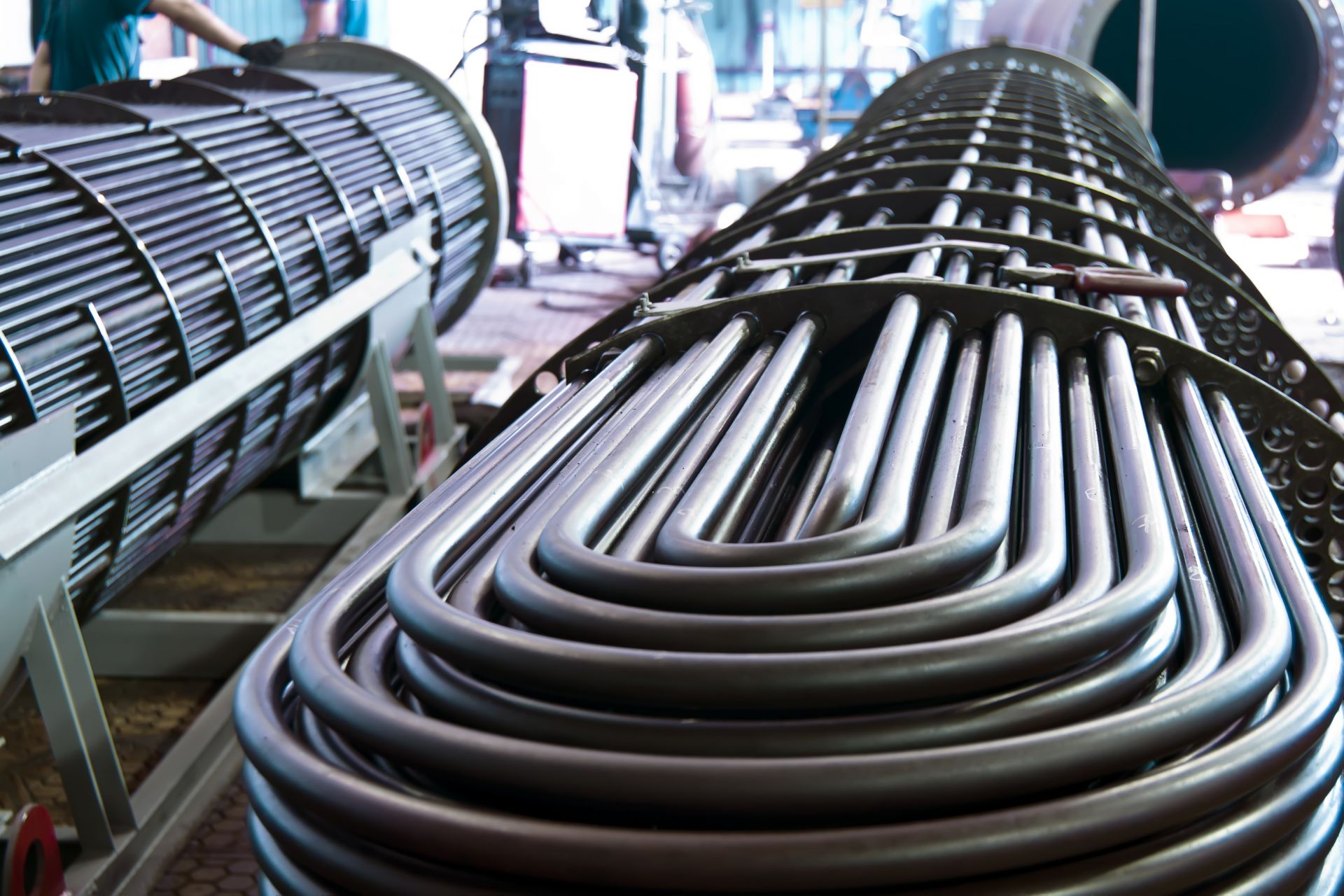Heat exchangers and boilers are the most commonly used equipment in industry and commerce. Heat exchanger tubes and boiler tubes are two specific types of tubes used in these devices, but what is the difference between them? In this blog post, we will discuss the differences between heat exchanger tubes and boiler tubes and provide you with all the information you need.
What is a heat exchange tube?
Heat exchanger tubes are cylindrical pressurized components used to transfer heat from one medium to another. They are used in a variety of applications such as HVAC systems, power plants, petrochemical plants, and the food processing industry. Heat exchanger tubing is typically made of stainless steel or copper and can be seamless or welded depending on the application. The inside of the tube also carries a fluid or gas that facilitates heat transfer between the two sides of the tube wall. Generally speaking, it is efficient and economical due to its low cost and simple maintenance requirements.
What are boiler tubes?
Boiler tubes are metal pipes used in various parts of a boiler to help conserve and transport heat. These pipes carry hot gases from the combustion chamber to the rest of the boiler plant, so they must be made of steel or alloy steel. They can come in many different shapes and sizes depending on their intended use, but generally they tend to have a small diameter, circular cross-section. Boiler tubes also provide structural support for the entire system and provide a watertight seal at pressure points where steam or condensation may occur. As boilers become more powerful, so do the corresponding boiler tube systems that keep them running – a testament to their indispensability and inefficient energy production.
The difference between heat exchanger tubes and boiler tubes
Structure and design:
Heat exchangers and boiler tubes differ in design, construction and purpose. Heat exchanger tubes are used for heat transfer between two fluids. They come in different shapes and sizes and can be rectangular, cylindrical or round, and boiler tubes heat water and create steam. Boiler tubes are typically thicker and stronger than heat exchanger tubes because they must withstand high pressures and temperatures.
Materials used:
Heat exchangers and boiler tubes are made from a variety of materials, depending on their intended use and environmental factors. Heat exchanger tubes are typically made from stainless steel, copper alloys, and nickel alloys, while boiler tubes are typically made from carbon steel, high-strength, low-alloy steel, or alloy steel.
Operating conditions:
Heat exchangers and boiler tubes are exposed to varying operating conditions, which affect their materials, construction and design. Heat exchanger tubes are typically exposed to low or moderate temperatures and pressures. The fluid flowing through them contains no impurities; their flow rate is usually constant or low. Boiler tubes, on the other hand, are exposed to very high temperatures and pressures. The water that passes through them may contain impurities such as minerals, chemicals, or particles. Flow rates through pipes can also vary widely.
Maintenance and repair:
Heat exchanger tubes and boiler tubes require different maintenance and repair procedures due to their different structures and designs. Heat exchanger tubes require regular cleaning and inspection to prevent debris buildup or corrosion. In most cases, they can be repaired by replacing individual damaged or corroded pipes. Boiler pipes need to be cleaned, inspected regularly, and the entire pipe replaced if necessary. Boiler tubes also require special welding procedures to withstand high pressures and temperatures.
Cost and Application:
Heat exchanger tubes and boiler tubes also differ in cost and application. Heat exchanger tubes are commonly used in the refrigeration, air conditioning and chemical processing industries, while boiler tubes are used in power generation, heating and industrial boilers. Due to their specific design and materials, heat exchanger tubes are generally more expensive than boiler tubes.
in conclusion:
Heat exchangers and boiler tubes are different types and serve different purposes. While both types of pipe are essential for industrial and commercial applications, their differences in design, materials, operating conditions, and maintenance make them unique. Understanding the differences between heat exchanger and boiler tubes can help you select the appropriate tubes for your specific application, ensuring maximum efficiency, performance and safety.
Tianjin Anton Metal Manufacture Co., Ltd. is a company specializing in the production of various nickel-based alloys, Hastelloy alloys and high-temperature alloy materials. The company was established in 1989 with a registered capital of 10.0 million, specializing in the production and sales of alloy materials. Anton Metal’s products are widely used in aerospace, chemical industry, electric power, automobile, nuclear energy and other fields, and can also provide customized alloy material solutions according to customer needs. If you need to know the price consultation of alloy materials or provide customized alloy material solutions, please feel free to contact the sales staff.
==========================================
www.antonmetal.com
ANTON METAL| Your specialty alloys manufacturer
Email: dominic@antonmetal.com
Phone: +8613132148618(wechat/whatsapp)
Post time: Dec-27-2023











